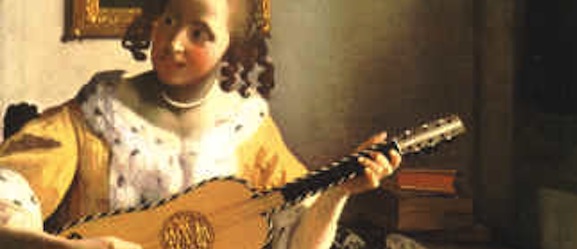You teach standard music notation in music class, right? Sure, but what about the other form of notation, TAB? Notation and TAB have been around for a long time, but nothing says controversy like teaching TAB in music class.
By the Numbers
TAB made a comeback a few decades ago. It’s no wonder: TAB is just so darned simple. If I told you to just play the D and G strings:
0 – 3 – 5; 0 – 3 – 6 – 5; 0 – 3 – 5 – 3 – 0
You wouldn’t know the rhythm, but the song would start to come to you as you played it.
Six String Lines
Most guitar tablature (aka “TAB”) takes it a step further using six lines (representing guitar strings) with numbers placed on these lines corresponding to a fret to be played. This looks a little more like music on staff paper.
Main Riff:
e|————-|—————|————-|————-
B|————-|—————|————-|————-
G|—0—3—5-|—0—3—6-5-|—0—3—5-|—3–0——
D|—0—3—5-|—0—3—6-5-|—0—3—5-|—3–0——
A|————-|—————|————-|————-
E|————-|—————|————-|————-
Add Some Rhythm
You will also find TAB with rhythmic notation like the example below. This form of TAB really starts to give us the feeling of music.
TAB and Note Sandwich
Often times you will find the TAB sitting right beneath standard notation, because it is so easy for guitarists to read it. You might also think about this form as learning notation through TAB.
Standard music notation is how most musicians communicate ideas on paper. Standard has it all: rhythm, pitch, articulation, you name it! However, it did not always look that way and one day musicians might use an entirely new form of notation. Give TAB a shot and see what you think. There are tons of great TABs out there for guitarists or you can start right here….Smoke on the water, fire in the sky!!!


